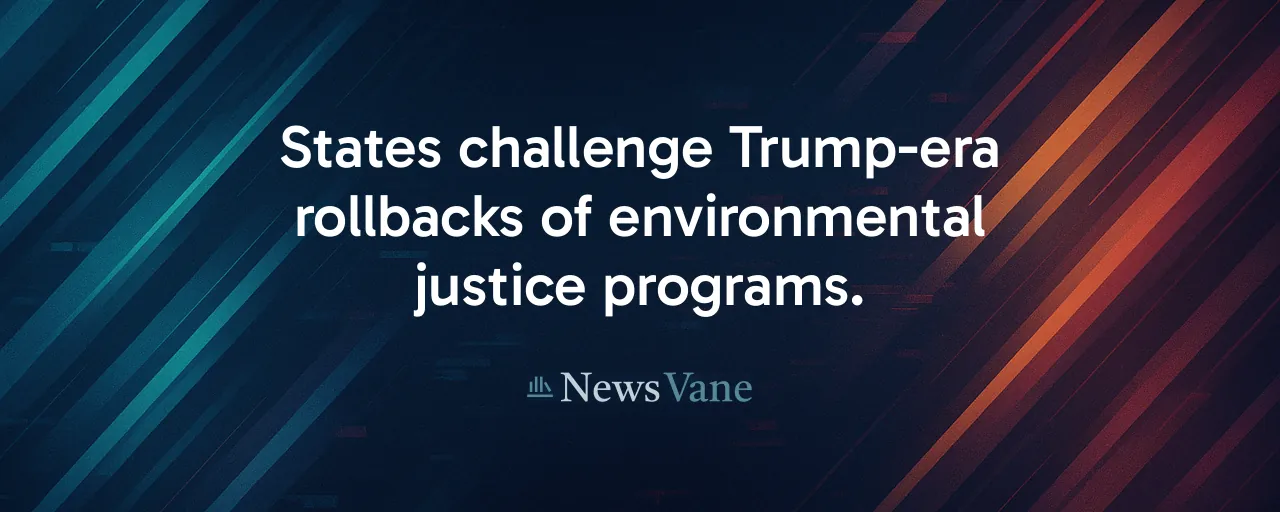States Take a Stand
On June 17, 2025, 13 state attorneys general, led by California’s Rob Bonta alongside Massachusetts and New York, issued a forceful guidance document. It defends the legality and urgency of environmental justice initiatives, which aim to secure clean air, water, and safe environments for everyone. This bold move directly confronts federal efforts under the Trump administration to weaken these programs. Why is this fight critical? Millions in low-income and minority communities face unfair pollution and climate risks daily.
The timing is no coincidence. Recent federal actions, including executive orders, have attacked environmental justice programs, calling them unlawful or redundant. These moves risk undoing decades of progress toward addressing systemic inequities. The states, however, are resolute. They assert that civil rights and environmental laws fully support prioritizing communities hit hardest by pollution.
The Stakes of Environmental Justice
Environmental justice strives to ensure every person enjoys a healthy environment, regardless of income or background. Its origins lie in the civil rights era, when activists revealed how toxic facilities often landed in minority neighborhoods. Data today confirms the problem persists. The EPA finds low-income and minority communities are 25% more likely to lack cooling during deadly heatwaves, which killed 1,600 Americans in 2024. Black children in historically redlined areas face asthma rates 40% higher than elsewhere.
Climate change worsens these gaps. A 2025 study in Nature Communications describes 'trapped' populations, like Rohingya refugees facing cyclones in Bangladesh with nowhere to go. In California, policymakers now recognize gender minorities as uniquely vulnerable to climate-driven violence after disasters. These realities demand action to protect those least equipped to cope.
Federal Pushback Meets State Defiance
Since January 2025, the Trump administration has targeted environmental justice. Executive orders have scrapped federal EJ programs, cut grants, and ended enforcement guidance. A February 2025 DOJ memo justified these steps as promoting 'fair justice,' but advocates argue it ignores clear evidence of unequal pollution burdens. The Heritage Foundation’s Project 2025 pushes further, urging cuts to EPA programs and air quality laws, threatening protections for vulnerable communities.
The coalition of attorneys general counters that federal orders cannot erase laws passed by Congress or state constitutions. They emphasize that existing statutes allow agencies to direct resources to communities facing disproportionate harm. This legal clarity aims to reassure local governments, businesses, and nonprofits that their environmental justice efforts remain valid, despite federal retreat.
Roots of Today’s Disparities
Today’s environmental inequities stem from historical policies like redlining, started in the 1930s. A 2024 California study showed formerly redlined neighborhoods endure higher noise, lead, and air pollution. A 2025 national analysis tied redlined areas to a 30% greater risk of hazards, such as diesel fumes or hazardous waste. These outcomes reflect intentional zoning and disinvestment that funneled pollution into minority communities.
The environmental justice movement, sparked in the 1980s, has worked to undo this harm. From the 1982 Warren County protests to Clinton’s 1994 executive order, advocates have demanded accountability. States like Washington and Colorado now require 40% of environmental funds to reach overburdened communities, proving local action can bypass federal delays.
States Forge Ahead
With federal support for environmental justice fading, states are taking charge. Colorado’s 2025 EnviroScreen 2.0 maps pollution and climate risks to shape oil-and-gas permits. Washington’s HEAL Act channels significant state funds to vulnerable communities. These steps show states leveraging their authority to protect residents amid shifting national policies. Can they sustain this momentum? The coalition’s guidance signals a firm commitment to try.
The attorneys general also vow to shield environmental justice laws from lawsuits. As conservative-led states challenge climate rules, like California’s auto-emission standards, legal battles loom. The Supreme Court’s 2025 term, with cases questioning EPA powers, could tip the balance in this federalism clash.
Building a Fairer Future
The coalition’s guidance goes beyond legal defense—it inspires action. By upholding the legality of environmental justice, the attorneys general encourage communities, businesses, and local leaders to keep pushing for cleaner, safer environments. They affirm a key principle: no community should bear an unfair share of pollution or climate harm.
Challenges persist. Federal rollbacks and lawsuits create uncertainty, while climate impacts intensify. States like California and Massachusetts rely on data-driven policies and multistate teamwork to stay the course. Their work proves progress is achievable when communities and leaders unite.
What’s needed for a truly equitable future? Ongoing dedication through laws, funding, and community input. As the attorneys general hold firm, they make clear that environmental justice is not only lawful but vital for a healthier, more just world.
